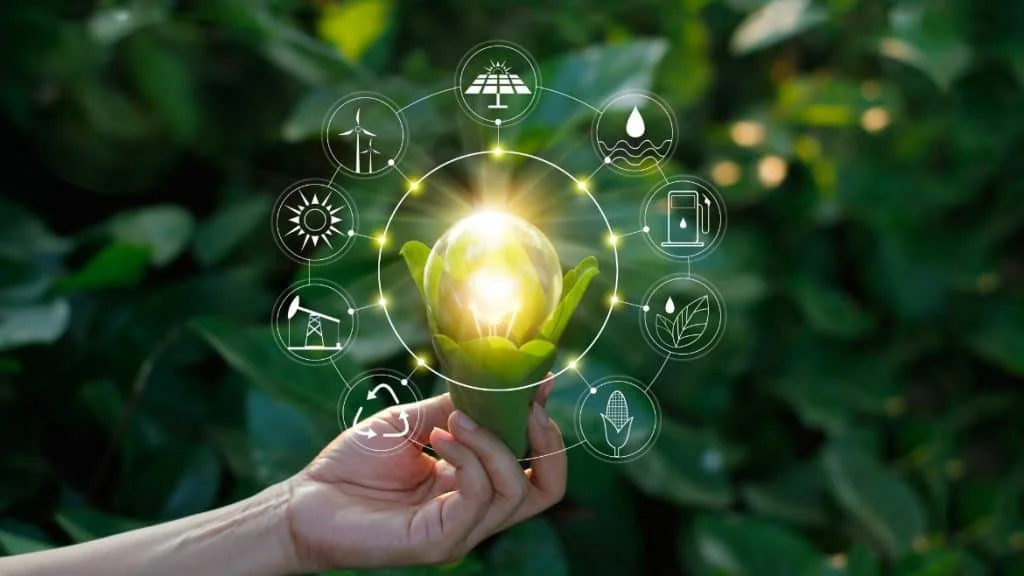The emergence of artificial intelligence is shaping up new possibilities for many sectors. There have been manifold advantages of using AI in farming, agriculture, education, healthcare, and transportation. Bright side of AI is that it can provide the most advanced and innovative solutions to the world’s pressing problems, such as climate change and environmental degradation and take enterprises towards net-zero emissions.
This article dives deep into a sustainable future with AI and how the board and management should sincerely approach the subject.
How can AI help with sustainability?
Research by PwC UK, commissioned by Microsoft, estimates that using AI for environmental applications could contribute up to USD 5.2 trillion to the global economy in 2030, a 4.4% increase relative to business as usual.
Numerous instances show that AI is not just capable but is already playing an important role in helping businesses achieve sustainable development goals.
Multiple companies are already making strides in the direction of using AI for sustainability, for example –
- BlackRock’s CEO announced that his firm now has a core goal of investing with environmental sustainability in mind.
- Goldman Sachs has now made “sustainable finance” core to its business.
- Davos World Economic Forum, the International Business Council announced metrics and a framework for reporting on subjects that include environmental sustainability goals.
As grouped and defined by the United Nations, there are 17 sustainable development goals under three pillars – Environment, Economy, and Society. AI helps in not just one but many goals under these categories, such as ending poverty and hunger, achieving sustainable energy, and protecting biodiversity.
Let’s talk about each of the three sustainability categories one by one.
Role of AI in Environmental Sustainability
AI can aid environmental sustainability in many industries such as agriculture, water, energy, climate change, and biodiversity conversation. It mainly helps through error reduction in manual tasks, greater efficiency, and using carbon-based raw materials.
Here are some examples of how AI comes into play to tackle some of these issues –
Agriculture – AI helps monitor environmental conditions and crop yields, which in turn helps transform production year upon year. It reduced the use of both fertilizer and water needed for irrigation. Companies include Blue River Technology, Harvest CROO Robotics, Trace Genomics.
Water Management – For better water management, AI aids by reducing waste production and lowering costs for waste management. For instance, AI-driven localized weather forecasting assists in restricting water usage. AI-powered robots assist in monitoring ocean water conditions such as pollution levels, temperature, and pH levels. It also helps forecast weather, soil, and subsurface water conditions to predict droughts. Companies involved – Kurita Water Industries and Plutoshift, Innovyze.
Energy Management – AI uses deep predictive analytics, deep learning, and intelligent grid systems to manage the demand and supply of renewable energy. It can predict weather patterns more accurately, thereby optimizing efficiency, cut costs and carbon pollution. Companies involved – Stem, FogHorn Systems and ClimaCell.
Biodiversity Conservation – AI helps in the protection of biodiversity in many ways. It gathers data from remote ocean locations about species and their natural habitat by combining satellite imagery computer vision. It can also detect illegal fishing, changes in land usage, vegetation and forest covers, and impending natural disasters. Companies involved – Blue River Technology – uses AI to detect invasive species and changes in biodiversity.
Role of AI In Climate Change Management
Research by PwC shows AI application could reduce worldwide greenhouse gas (GHG) emissions by 4% in 2030, equivalent to the 2030 annual emissions of Australia, Canada, and Japan combined.
Enterprises must act urgently to mitigate climate change. They can use AI solutions as a part of sustainable development to design an action plan for carbon emission and climate crisis management. By deploying the most impactful use cases, industries can reduce their carbon emissions, GHG footprint, and pollution, enhance power efficiency and reduce waste, thereby bolstering efforts in the right direction.
Some examples of AI to manage climate crises are precision agriculture, AI-infused clean distributed energy grids, sustainable supply chains, improved weather, disaster prediction and response, and environmental monitoring.
Two real-world examples of AI helping with reducing carbon emissions are –
- Google’s DeepMind division. It teaches itself to reduce the energy used to cool Google’s Data Centers, reducing its energy requirements by 35%.
- Wipro is committed to reducing its carbon emissions to zero by 2040 and a 55% reduction by 2030 through sustainable development strategies, contributing to the Net-Zero Greenhouse Gas mission.
Role of AI In Financial Sustainability
According to Microsoft and PwC UK, using AI for sustainability and environmental applications could contribute $5.2 trillion to the global economy in 2030.
When combined, artificial intelligence and machine learning can help enterprises make faster decisions and detect fraud and financial crime accurately. For instance, algorithm-based trading helps financial institutions make better decisions, and the use of ‘Smart Ledgers’ technology supports taking up CDC (collective defined contribution) schemes.
As a result of the environmental applications, AI could boost global GDP by 3.1 – 4.4% (Microsoft) and can generate a global economic uplift, yielding approximately US$3.6 – 5.2 trillion driven by optimized inputs, higher output productivity, and automation of manual tasks.
However, macro-level standards need to be implemented to mitigate the risks associated with the interconnectedness of financial markets.
Summing Up
In addition to those highlighted in this article, there are so many ways that AI will enable a sustainable future. Hence, it is imperative that investing in AI can benefit one organization and the entire society. Organizations must adopt radical methods, make adequate investments, and deploy appropriate solutions to pursue sustainability goals. It will require transitioning into more sustainable development practices and a skilled workforce that can support such changes.
